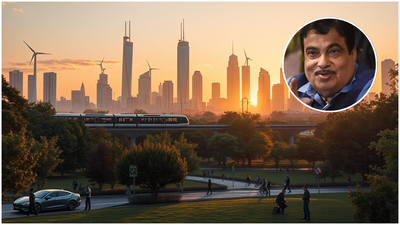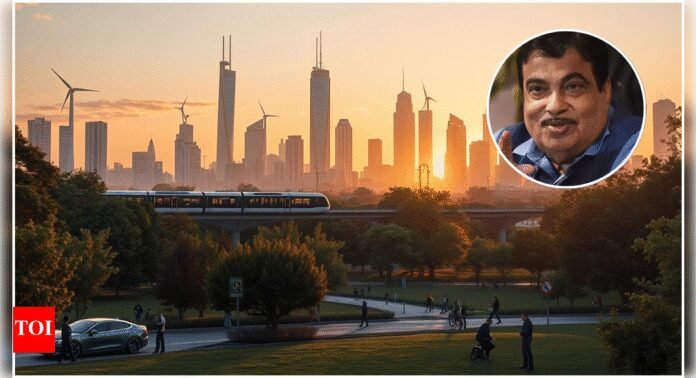India’s Transport Revolution: Nitin Gadkari’s Vision
Union Minister Nitin Gadkari Unveils Futuristic Roadmap

Union Minister Nitin Gadkari has a bold vision. He wants to change India’s transport system. His plan includes electric buses, hyperloop corridors, and ropeway connectivity.
Key Initiatives
- Electric buses for rapid transport
- Hyperloop corridors in cities
- Ropeway and cable-car links in remote areas
Driving Innovation
The government is working on new mobility solutions. These aim to reduce pollution, improve connectivity, and lower logistics costs.
Gadkari said, “We are pushing innovation. A revolution in mass mobility is coming.” Technology, sustainability, and accessibility will guide India’s infrastructure growth.
Ropeway and Funicular Railway Projects
Work is ongoing on 360 ropeway and funicular railway projects. These are in hilly areas, including Kedarnath. 60 projects are already in progress.
These systems are made for steep slopes. They offer safe and efficient transport in remote areas.
Urban Transport Solutions
Pilot projects are planned for Delhi and Bengaluru. These include Metrino pod taxis, hyperloop systems, and pillar-based transport networks.
Gadkari said, “Soon, cities will have cable-run buses and electric rapid transport with airplane-like facilities.”
Electric Buses
Tenders are out for 135-seater electric buses in Nagpur. These buses have premium seating, AC, and can travel at 120–125 km/hr.
They can recharge in 30–40 minutes. They will first run on trial and then on intercity routes like Delhi-Jaipur and Mumbai-Pune.
Road Infrastructure
Gadkari repeated the ministry’s goal of building 100 km of highways per day. They also plan to upgrade 25,000 km of two-lane roads to four lanes.
National highways have grown from 91,287 km in 2013-14 to 1,46,204 km today. High-speed corridors have also increased, from 93 km in 2014 to 2,474 km now.
Safety and Quality Improvements
New technologies are being introduced. These include precast construction, AI-based monitoring, and 3-ft road barriers.
The government plans to plant 20–25 crore trees along highways. A proposal for a “tree bank” is in advanced stages with the environment ministry.
Green Energy Initiatives
11 companies, including Tata, Toyota, Hyundai, and Mahindra, will manufacture flex-fuel vehicles. These vehicles can run on ethanol or methanol blends, reducing India’s reliance on fossil fuels.
India’s transport sector contributes nearly 40% to the country’s air pollution. The switch to green mobility will cut emissions and reduce India’s fuel import bill, currently around Rs 22 lakh crore.
Economic Benefits
Better infrastructure and alternative fuels will help lower logistics costs from 14% to 9% of GDP by year-end.
Gadkari said India could become a net energy exporter in 6–7 years. This will be driven by advances in ethanol, biodiesel, and hydrogen fuel technologies.



